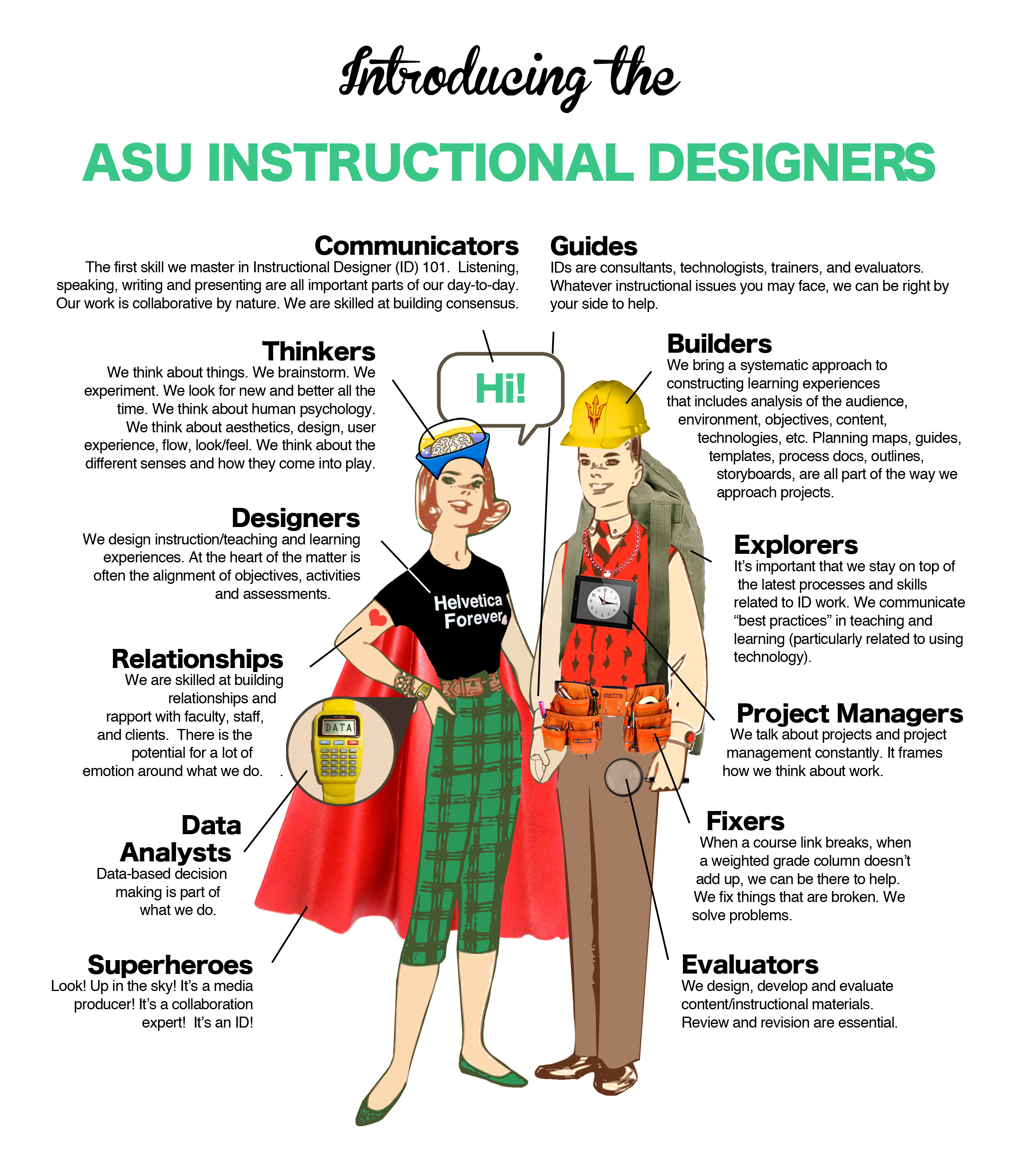Table Of Content

O’Reilly members get unlimited access to books, live events, courses curated by job role, and more from O’Reilly and nearly 200 top publishers.
How ATD Can Help You With Instructional Design?
They frequently use mobile phones to access the course, engage with the course during breaks, and often may be away from the online course for an entire day, depending on their workload that day or that week. For half the students, this is their first online course, whereas for the other half, online courses are familiar. Because the students are working nurses, they bring a great deal of experience and background, and want to be treated like knowledgeable professionals, not new students. Other contemporary models include the Successive Approximation Model (SAM), Cathy Moore’s Action Mapping, and rapid prototyping models such as Agile. The hallmark of these newer models is their iterative approach to instructional design. In short, instructional design is a systematic process that governs the delivery of effective learning – from concept to implementation.
Fundamental 5: Iteratively Ideate, Curate, and Develop
For learning design to be effective, there must be solid instruction, activities and opportunities for specific feedback, valid assessments, and clear objectives and outcomes, with strong alignment among them all. To be meaningful, the learning design should be relevant, authentic, and connected to students’ lives (which requires designers to know who learners are). To be pleasurable, the experience should lead learners to experience moments of pride, joy, or connectedness (to name a few positive results).
Where to Find Instructional Designer Jobs
To help you gain further insights into the nature of systematic design, I will compare the process to related fields of studies, including learning theory, curriculum & instruction, instructional/educational technology and performance technology. There are many widely implemented learning practices that are little more than myths. Not surprisingly most formal learning experiences are incredibly inefficient. Instructional design models provide frameworks to facilitate gaining new knowledge, skills or attitudes. Instructional designers use these models to guide the creation of engaging learning activities based on the science of how people learn. Preparing learners for digital learning and adapting in-classroom courses for remote learning are a particular focus, and Hodell provides an overview of career options and development.
Exploring A Step-By-Step Instructional Design Process
However, according to zippia.com, only 25 percent of instructional designers earned a master’s degree, while 61 percent earned a bachelor’s degree. Learning analytics is “the measurement, collection, analysis and reporting of data about learners and their contexts, for purposes of understanding and optimizing learning and the environments in which it occurs” (Siemens & Gasevic, 2012). An amazing amount of data is collected that can be used for course iteration, and for the purposes of informing iterations in course designs. Data on performance, engagement, and the degree to which students achieved the outcomes are collected in modern systems (rubric ratings, assessment scores, discussions, sentiment analysis, and group engagement, to name a few). In addition, data on test items and quizzes can also be obtained to continually ensure the validity of both low-stakes and high-stakes test items as well as to flag potential issues in the wording of questions.
Skills you'll gain
They will develop a thirst for knowledge that will keep them at the forefront of their field for a lifetime. Those who design instructional systems, therefore, must keep that goal in mind as they create their system. Let's explore some basic principles of effective Instructional Systems Design (ISD). ISD is based on the belief that training is most effective when it gives learners a clear statement of what knowledge they will gain through training and how their performance will be evaluated.
How Houston ISD's New Education System will change schools - Chron
How Houston ISD's New Education System will change schools.
Posted: Tue, 11 Jul 2023 07:00:00 GMT [source]
Gagne’s Nine Events of Instructions

Second, in developing a unique problem-solving process he calls the ARCS Motivation.... Over the years, the steps were revised and eventually the model itself became more dynamic and interactive than its original hierarchical rendition, until its most popular version appeared in the mid-80s, as we understand it today. Obtaining a bachelor’s degree in instructional design or a related field is a common requirement for many educational organizations and institutions. Instructional designers also earn degrees in social science, communications, English, and education. Most instructional designers hold a bachelor’s degree in instructional design or a related field. Often an instructional designer and instructional technologist will pair together; there may also be videographers, graphic designers, and sometimes programmers involved if the learning experience is highly technical in nature.
This is also the phase where the project manager ensures that the books, hands on equipment, tools, CD-ROMs and software are in place, and that the learning application or Web site is functional. Dive in for free with a 10-day trial of the O’Reilly learning platform—then explore all the other resources our members count on to build skills and solve problems every day. Connecting all phases of the model are external and reciprocal revision opportunities.
A philosophy professor, when teaching how to detect certain fallacies, would be wise to pass out several popular adverts to their students to see if they can put their theoretical knowledge to work. Memorizing truth tables and lists of informal fallacies is one thing. One way to determine learner needs and course objectives is by using Bloom’s Taxonomy. Bloom’s Taxonomy is a system used to define and distinguish different levels of learning.
In contrast, instructional theories and models are prescriptive in nature. They seek to identify useful methods for stimulating learning in particular situations based on particular learning theories. For this course, we will study the Dick, Carey and Carey (2015) model for instructional design that is based primarily on Gagnes (1985) instructional theory.
Determining sustainability requires a deep understanding of and sensitivity toward context. For example, in one instance a group of instructional technologists may not have the capacity to edit and maintain certain types of interactives, whereas other groups may have expertise, funding, and capacity. Each situation requires a consideration of context when making design decisions, as decisions made now have both positive and negative ramifications over time. Producing engaging content, and using a proven and repeatable ID process, ensures a greater segment of the workforce embraces training, and that L&D professionals can use standardized metrics to evaluate the effectiveness of their training.
During the course design process, always start with your audience in mind, and use the welcoming part to include the introduction, course objectives, estimated time, and feedback. Add the course sections/modules, the activities within the modules, and the final assessment. At the end make sure to incorporate the closing/summary part with the congratulations part, key takeaways, and what’s next. In the context of the workplace, instructional design provides a practical and systematic process for delivering effective training to its target audience. It's one of the 23 capabilities in the Talent Development Capability Model™. Many factors determine a professional’s annual salary, such as qualifications, experience, geographic location, and organization.

No comments:
Post a Comment